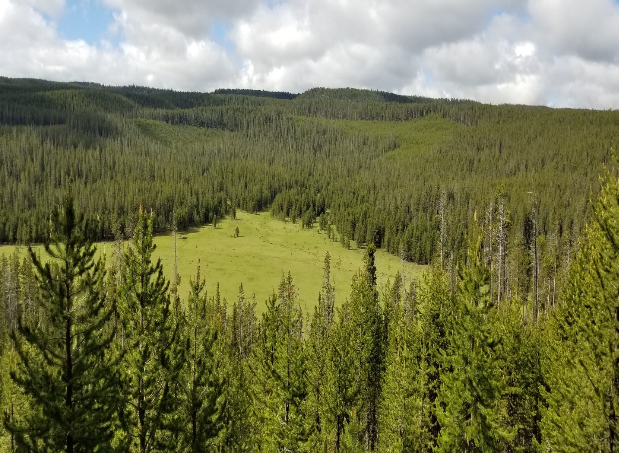Finally some truth from the timber industry

A photo of an area in the Custer Gallatin National Forest where the South Plateau Project will occur. (Image via USFS)
For decades whenever an industrial facility closed in Montana, there was always someone to blame besides the owners, operators, board decisions or economic conditions. That someone was all-too-often industry’s favorite whipping boy, the environmentalists.
But when two timber mills in western Montana recently announced closures they finally told the truth — they made business decisions based on a number of factors, none of which could be blamed on environmentalists, lack of logs, or the industry’s latest favorite scapegoat “serial litigators” filing “frivolous lawsuits.”
When the directors of Seeley Lake’s Pyramid Lumber announced the closure of the mill, which has been running since 1949, their statement cited “labor shortages, lack of housing, unprecedented rising costs, plummeting lumber prices, and the cost of living in western Montana have crippled Pyramid’s ability to operate.”
As Todd Johnson, son of the mill’s founder, said: “today’s crisis is much worse than what was experienced in 2000, 2007, and 2015. There is simply no better solution for the owners than to shut the mill down permanently.”
Indeed, despite the timber industry and it’s political allies’ demonstrably false accusations of the past, the truth is that over the last ten years the Flathead and Lolo National Forests have significantly increased the annual volume of timber sold and cut, with the 2022 harvest the highest in 15 years. During the last five years the average annual timber volume sold was 46 million board feet on the Flathead National Forest and 36 million board feet on the Lolo National Forest.
When Roseburg Forest Products announced the closure of its Missoula particleboard mill an employee echoed Pyramid’s reasons, saying: “Basically the problem is we have a difficult time because of the cost of living in Missoula. Hiring people that want to work for 18 or 20 bucks an hour or whatever it is they pay, people just can’t afford to live here and make that kind of money.”
Roseburg’s CEO also noted the mill’s outdated technology, which Pyramid has also cited. “Unfortunately, Missoula’s older platform and technology is simply not competitive from a cost structure perspective in a marketplace with many new, modern particleboard facilities.” The company is, however, investing heavily in its Oregon facilities and is building a new mill in North Carolina to take advantage of the fast-growing, highly-productive southern timber plantations.
If there’s any tinge of surreality surrounding the closures, it’s that we can’t have “healthy forests” without logging and timber mills. Yet somehow these forests managed to survive since the last Ice Age, long before chainsaws, feller-bunchers, and timber mills were around to supposedly keep them “healthy.”
And indeed, it’s quite the paradox created by politicians and the Forest Service that, despite scientific data to the contrary, we have to continuously thin, cut, and burn forests to save them. The truth is our forests and their intact ecosystems function as one of our best tools for removing the climate-destroying carbon dioxide overload in Earth’s atmosphere. Not only do forests sequester an astounding 15% of the nation’s carbon emissions, they do it for free — if only we let them.
We can expect to see politicians and their timber industry supporters skew the mill shutdowns for their own campaign-related propaganda, complete with science-free falsehoods and unfounded claims of frivolous lawsuits.
But Montanans have it “from the horse’s mouth” on this one — and the mill owners finally told the truth. The closures are primarily about the cost of living in Montana, a deficient labor pool, and newer, more efficient technology.
When it comes to formulating policy on our national forests truth and science are the most prudent foundations — not demonizing those who oppose the endless attempts by the industry and Forest Service to log the last of our old growth forests.
The post Finally some truth from the timber industry appeared first on Daily Montanan.
